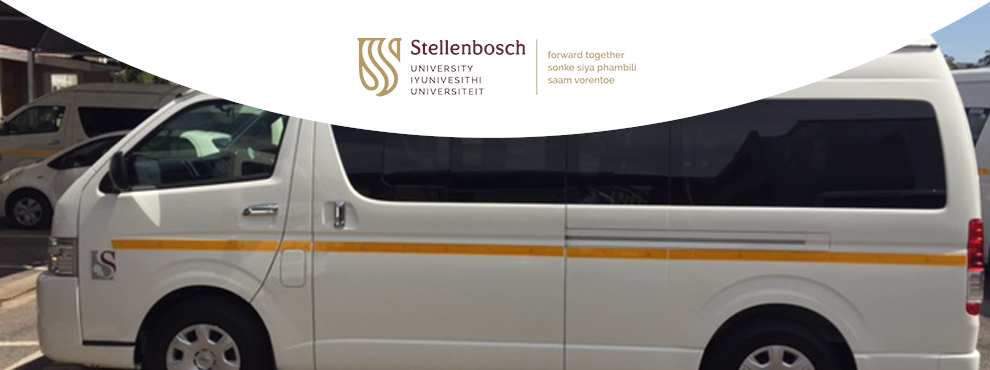2010 Mobility Master Plan
The Stellenbosch University 2010 Mobility Master Plan is based on the outcomes of an in-depth and comprehensive mobility study, having investigated transport (mobility) as a whole, which posed the two questions:
- Which transport options do SU students and staff use to get to the campuses; and
- How do they move around when on campus?
The outcomes showed that, as far as Stellenbosch is concerned, a third of all students live in university accommodation on campus while a third live in the greater Stellenbosch with another third in the surrounding towns. Approximately 43% of students primarily use car transport to travel to campus daily.
83% of the staff, of which a large group live outside Stellenbosch, also use their cars to travel to and around campus. The car utilisation of both students and staff therefore explains the parking problems and traffic congestion.
At Tygerberg only 13,5% of the students live in the residences on campus. The remaining 86,5% live in the suburbs and primarily use their cars to travel to campus.
Practical considerations, like a lack of space and the high costs involved in road widening and building more parking areas, make the expansion of car transport unfeasible and unsustainable. But there is also the fact that the SU made an active decision towards sustainable renewal. The SU no longer wants to promote car transport, which is notorious for leaving a high carbon footprint. It also endeavours to create a human-friendlier environment by reducing motor vehicles on campus and in town and establishing more green spaces.
Focus was therefore placed on ways in which car transport could be used in combination with other transport options, such as walking, cycling and public transport.
